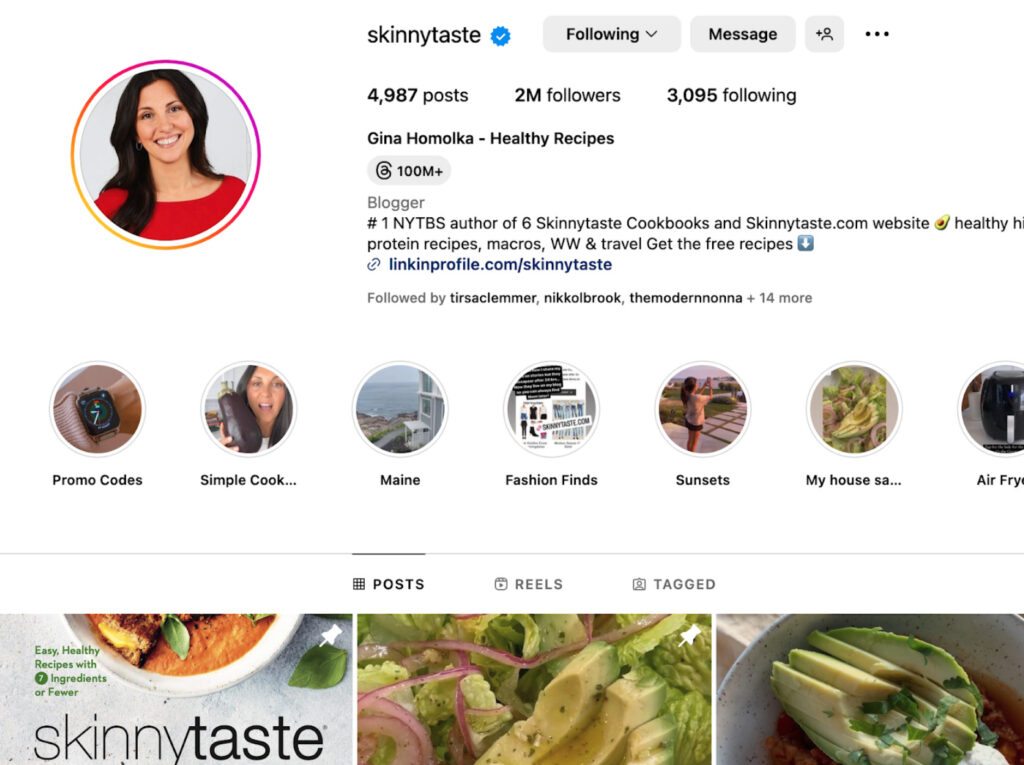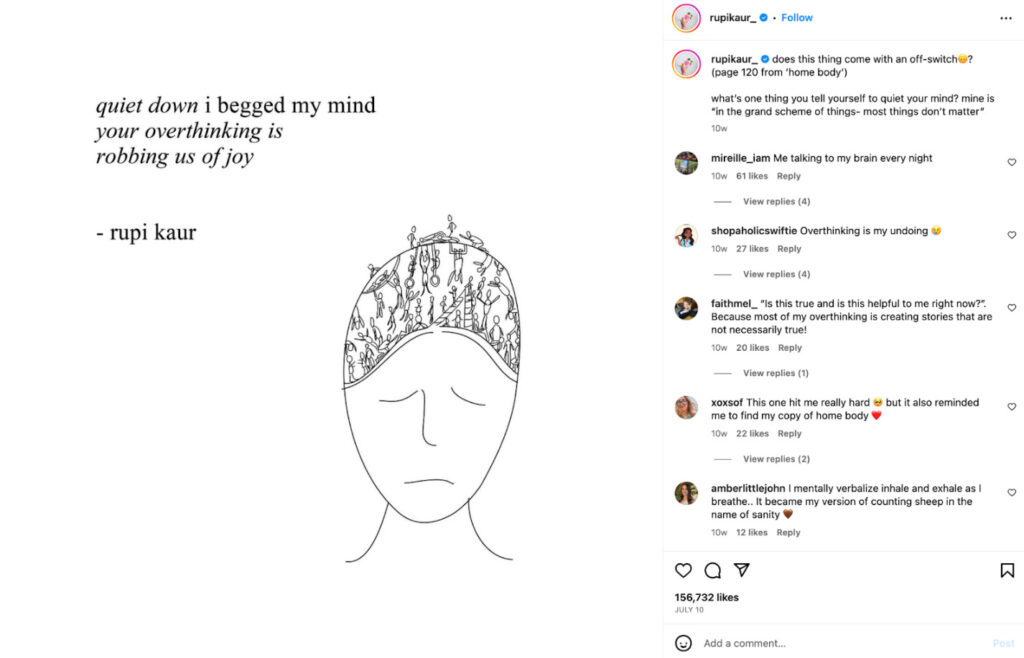Content creation 101: How to kickstart your journey as a content creator
By Liz Willits October 3, 2023
So you want to become a content creator?
You likely know the perks of being a content creator: Autonomy in your career, creative work, the ability to chase your passions.
Plus, let’s not forget the potential earnings. The top five creators on TikTok made a total of $46 million in 2021.
And how could you not want the time freedom? 52 percent of creators who make between $50,000 and $100,000 spend less than 10 hours a week creating content.
Sounds like a dream job.
However, in 2023, there are some major challenges to becoming a content creator as well, including:
- Competition: There are over 200 million content creators worldwide, according to a 2022 Creator Report by Linktree.
- Monetization: 59 percent of beginner creators haven’t made more than $100 in a year (Linktree Creator Report, 2022). And it takes content creators five months, on average, to earn their first dollar.
- Creating quality content consistently. To be a successful content creator, you need to be able to create quality content — day in and day out — and build a loyal audience. This is no small task, and many would-be content creators have failed to accomplish this.
Despite these challenges, it is still very possible to become a successful content creator in 2023, whether you want to make it a part-time or full-time career.
In this guide, we’ll show you how to get started. You’ll learn about:
- The different types of content creators
- How much content creators earn
- Six steps to become a content creator
- Inspiring stories of real-life content creators and their work
Now, let’s get started. Reading this guide is only the first step of your content creator journey.
The types of content creators
If you’re unsure what type of content creator you want to be, this section will walk you through some of the most common types of creators, what they do, and what types of content they publish.
When thinking about the type of content creator you want to be, there are two questions to ask yourself:
- What type of content will I create?
- Where (and in what format) will I publish my content?
We’ll help you answer both of these questions below. First, let’s discuss the types of content you can create based on the content topic.
The types of content creators based on content topic
1 – Influencer
Influencers create content that primarily revolves around their lifestyle, experiences, and personality.
They often collaborate with brands and share their recommendations, fashion choices, travel adventures, or day-to-day routines. Influencers aim to connect with and influence their audience.
For example, Kylie Jenner is an influencer. She is one of the most followed Instagram influencers in the world with 399 million followers.

2 – Educator
Educators are content creators who focus on sharing knowledge and expertise. They produce content to inform, educate, and help their audience learn new skills or gain insights into specific subjects.
Sam Sulek, a fitness YouTuber and TikToker who has taken off recently, is one example of an educator. He teaches his audience about weightlifting and nutrition for weightlifters.

Another example is SkinnyTaste. Gina Homolka, Founder of SkinnyTaste, educates her audience on cooking and healthy eating, primarily through Instagram and her blog.

Pro tip: Some creators are both educators and influencers. You don’t need to limit yourself to just one type.
3 – Streamer
Streamers predominantly engage in live streaming, where they broadcast themselves playing video games, discussing various topics, or showcasing their talents. Platforms like Twitch and YouTube Live provide a space for streamers to interact with viewers in real time.
A famous example of a streamer is Tyler “Ninja” Blevins. Ninja is widely recognized as one of the most popular and influential streamers in the world. He gained massive popularity primarily through streaming the popular video game “Fortnite” on platforms like Twitch and YouTube.

4 – Coach
Content creators in the coaching niche offer guidance and support in areas such as personal development, fitness, career, or life coaching. They use their content to motivate and empower their audience to achieve their goals.
Take Tony Robbins for example. He is a renowned life coach, self-help author, and motivational speaker who has been inspiring and coaching individuals for decades.
5 – Author
Authors create written content in the form of books, e-books, articles, poems and essays. They tell stories, share knowledge, and/or express their creative imagination.
One famous author who became well-known through content creation, particularly on social media, is Rupi Kaur, a Canadian poet, writer, and illustrator. She gained recognition for her short, minimalist poems and illustrations, which she began sharing on Instagram.

6 – Musician
Musicians produce content centered around their musical talents. They compose and perform songs, create music videos, and share their artistic journey with their audience. Platforms like TikTok, SoundCloud, Spotify, and YouTube are popular places to publish musical content.
Related: Selling digital music online: Platforms, tips, and strategies
One notable example of a musician who gained fame through content creation is Olivia Rodrigo. Rodrigo achieved widespread recognition and success with her debut single “Drivers License.”
Rodrigo promoted “Drivers License” on her TikTok, and it quickly went viral when users started creating videos using the song. This user-generated content contributed to the song’s viral nature and helped it gain millions of views and likes.
Due in large part to its TikTok popularity, “Drivers License” climbed the music charts rapidly. It debuted at number one on the Billboard Hot 100, making Rodrigo one of the youngest artists to achieve this feat.
@livbedumb ♬ drivers license – Olivia Rodrigo
7 – Comedian
Comedians specialize in creating humorous, entertaining content, including stand-up comedy, funny sketches, and comedic commentary.
Comedian Trevor Wallace gained fame by posting short comedy skits on social media. He initially posted these skits on Vine, a platform known for its six-second videos. When Vine shut down, he transitioned to YouTube, where he continues to create longer-form comedy content and has amassed 4.32 million subscribers as of 2023.
He now posts comedy skits regularly on YouTube, Instagram, and TikTok.
8 – Artist
Artists showcase their creative abilities through visual mediums like painting, drawing, sculpture, and digital art. They use their content to display their artistic vision and connect with art enthusiasts.
Matt Chessco, who quit his job in 2020 to become a full-time artist, gained fame with his TikTok videos. As of 2023, he has 2.8 million followers on TikTok.
@mattchessco Reposting my most viral video of 2020. The painting is for sale on my website 😊 #marilynmonroe #art ♬ original sound – Snubby J
The types of content creators based on format and platform
Now, you’ll learn about the most common content formats and publication sites. There are many creators who publish on multiple platforms, like Mr. Beast for example who is primarily a YouTuber but also publishes content on TikTok, X (formerly called Twitter), and many more platforms.
1- Bloggers
Bloggers craft written content in the form of articles or blog posts, often shared on their own websites or blogging platforms like Medium. They delve deep into topics, offering detailed insights and analysis.
Related: How to promote a blog (with strategies and examples from established bloggers)
2 – Vloggers
Vloggers capture their experiences and stories through video, creating vlogs (video blogs) that showcase their daily lives, travels, or specific subjects. They primarily publish on video-sharing platforms like YouTube.
3 – YouTubers
A YouTuber specializes in creating video content for YouTube, exploring diverse topics — from tutorials and reviews to entertainment and vlogs.
Related: How to get more YouTube views: a comprehensive guide to video success
4 – Podcasters
Podcasters produce audio content in the form of episodes, which can cover a wide range of topics. Podcasts are available on various platforms, like Spotify and Apple Podcasts.
5 – TikTok Creators
TikTok creators publish videos on TikTok, often using music and trends to capture their audience’s attention.
6 – Instagram Creators
Instagram creators curate visually appealing posts and stories on Instagram. They often focus on photography, fashion, beauty, and lifestyle content, aiming to inspire and connect with their followers.
7 – X (formerly called Twitter) Creators
X creators use the platform to share all kinds of content, including thoughts, opinions, and updates. They engage in conversations, share news, and build a following through their tweets.
Content creator salary: How much do content creators make?
This varies widely. Some content creators make no money while others earn billions of dollars every year.
To give you an idea of what you could earn as a content creator, let’s look at some stats:
- Beginner creators’ income: 59 percent of beginner creators haven’t monetized yet. 35 percent have monetized but earn below what is considered a “livable income.” Six percent of beginner creators have earned greater than $10,000 (Linktree Creator Report, 2022).
- Top creators’ income: Only about 4% of creators make more than $100,000 a year., according to Goldman Sachs. Mr. Beast was the top-earning creator on Forbes‘ Top Creators 2022 list. He made $54 million.
- Full-time creators’ income: 12 percent of full-time creators make greater than $50,000 per year. 46 percent of full-time creators make less than $1,000 per year (Linktree Creator Report, 2022).
- Part-time creators’ income: Three percent of part-time creators make greater than $50,000 per year. 68 percent of part-time creators make less than $1,000 per year, (Linktree Creator Report, 2022).
- Average salary for content creators: In 2022, the average salary for content creators was $44,192 per year, Hubspot research found. That’s over $22 per hour or $3,680 per month.
While content creators’ salaries vary, hopefully this gives you a good idea of how much creators can make as beginners and pros.
Steps to become a content creator
It’s time to give you a step-by-step blueprint that’ll show you how to become a content creator. Follow these steps to get started on your content creator journey:
Step 1: Find your niche or content focus
During this step, you’ll identify what kind of content you’ll create.
First, start by reflecting on and writing down:
- Your passions: Write down your interests, hobbies, and passions. What topics or activities genuinely excite you? Your content creation will be far more enjoyable if you create content around something you love.
- Your skills: Consider your skills, expertise, and areas where you excel. Your content will be more valuable if it aligns with your expertise, and it will be easier to promote yourself as a thought leader if you already have deep expertise or skills in an area.
- Your knowledge: Think about the subjects you know a lot about or have a deep understanding of. Your knowledge can set you apart as an authority in your chosen niche. Plus, it’ll be easier to start creating great content quickly if you’re creating content around a topic you’re already knowledgeable about.
Next, using what you just wrote down, research what niches and topics are already popular with audiences. By choosing a topic or niche that’s already proven and popular, you can be confident there’s an audience for your content.
Here’s how to do this:
- Analyze trends: Research trending topics and niches related to the passions, skills, and/or knowledge you just wrote down. Use platforms like Google Trends, Reddit, Quora, X, Answer The Public, TikTok, and Instagram.
- Study your competitors: Look at content creators or influencers in your areas of interest. Analyze their content, engagement, and audience size. Identify gaps or opportunities within those niches. Write down what topics they cover in their most-popular content and consider creating unique content on these topics with your own spin. (Don’t just copy them!)
Finally, narrow down your focus and write down your creator’s mission statement.
- Niche down: Sometimes, narrowing your focus within a broad niche can be beneficial. For example, if you’re interested in fitness, consider specializing in “home workouts for busy professionals” rather than general fitness.
- Find your unique angle: Assess what unique perspective or angle you can bring to your chosen niche. What makes your content stand out from the competition?
Step 2: Select where you’ll publish content and in what format.
Once you’ve determined your niche, it’s time to select the platform that best suits your content. I recommend starting with one content format and/or platform when you’re first getting started. There are a few reasons for this:
- Focus: Concentrating your efforts on one platform allows you to focus your energy and resources on that platform. It’s easier, at least initially, to excel in one place than to spread yourself thin across multiple platforms.
- Mastery: Mastering one platform is essential before expanding to others. Each platform has its own quirks, algorithms, and best practices. For instance, creating content on TikTok is very different from creating content on X. If you are trying to post on both platforms at once, you may become overwhelmed and succeed on neither platform.
- Time: Managing multiple platforms can be time-consuming. By starting with one, you can allocate more time to perfecting your content and growing your audience on that platform.
You can use the list of types of content creators from earlier in this guide to decide what type of content you’ll create. Keep in mind: It’s easier to create content using skills you already have than learning new skills.
So, if you’re already a great writer, you might want to consider blogging or creating written content on X or LinkedIn.
If you’re a great photographer or videographer, consider creating content on TikTok, YouTube, or Instagram.
If you’ve podcasted before or know how to edit a podcast, think about becoming a podcaster.
Step 3: Build your brand
Your brand is what sets you apart from the rest. It’s your identity and what your audience can expect from you. Let’s delve into the two parts of building your brand.
1 – Develop your unique brand identity
Your brand identity is more than just a logo or a business name. It’s the essence of who you are as a content creator, and it encompasses various elements:
Values
Consider what you stand for, your principles, and the message you want to convey through your content. Your values will form the foundation of your brand.
Vision and vision statement
Your vision guides all of the content you create, and your vision statement clearly and succinctly articulates your audience, the type of content you create and where you publish it, and the problem you’re solving for your audience.
Here’s an example of a creator vision statement I wrote for SkinnyTaste, the food and nutrition blog I mentioned earlier: SkinnyTaste creates nutritious, low-calorie food recipes, and nutrition content for busy moms and working women that helps them cook and eat healthier meals. This content is published on the SkinnyTaste blog, the SkinnyTaste email newsletter, Instagram, Facebook, and TikTok.
And here’s a simple fill-in-the-blank template you can use to write your vision statement:
[NAME OF YOUR BRAND] creates [SPECIFIC TYPE OF CONTENT] for [YOUR AUDIENCE] that helps them [PROBLEM YOU SOLVE]. This content is published on [PLACE(S) YOU PUBLISH CONTENT].
Visual identity, logo, and design elements
Choose a visual style that aligns with your niche and personality. This includes colors, fonts, and graphics that you consistently use in your content and across your platforms.
If applicable, create a memorable logo and design elements (like icons or imagery) that represent your brand. These visual cues can help reinforce your brand identity.
Brand voice
Your brand should have a distinct and consistent voice. With a consistent brand voice, your audience should be able to tell when they’re engaging with your content without seeing your name or logo.
Related: AI marketing tools creators can use—without losing your personality
2 – Establish a consistent online presence
How you show up online and how often is a part of your brand as well. Here’s how to establish and maintain a consistent online presence:
Consistent business name or handle
Use the same username or handle across all your social media platforms. This makes it easier for your audience to find and follow you.
Coherent content style
Maintain a consistent style in your content, whether it’s the format of your videos, the tone of your writing, or the visual aesthetics of your images.
Predictable and regular posting schedule
Create a posting schedule and stick to it. Consistent content delivery keeps your audience engaged and coming back for more.
Regular engagement
Interact with your audience regularly. Respond to comments, messages, and emails. Engagement fosters a sense of community and builds trust and loyalty.
Collaborations that match your brand and vision
Collaborate with other content creators or brands that align with your values and niche. These partnerships can expand your reach and introduce your brand to new audiences.
Pro tip: Building your brand is an ongoing process. As you evolve as a content creator, your brand may evolve with you.
Step 4: Start publishing content and growing your audience
Now it’s finally time to begin creating content and growing your audience. Don’t worry if engagement and growth are slow initially. This is the case for most creators. But here are some proven tips to help you grow more quickly and create more engaging content:
Tip 1: Aim for quality over quantity
Prioritize high-quality content over frequent, mediocre or average posts. Quality content is more likely to be shared and recommended.
Invest time in editing, proofreading, and improving your content’s production value.
Related: 18 best content creation tools that will make creating content a breeze
Tip 2: Engage with other creators
We already touched on engaging with your audience, but you can also engage with your wider industry or niche; those who don’t currently follow you.
This can be an effective way to grow your own audience. When you comment and engage in a helpful or entertaining way on other creators’ posts, their followers might see your engagement and follow you themselves.
Tip 3: Create interactive content
Host Q&A sessions, live streams, or AMAs (Ask Me Anything) to interact directly with your audience.
Tip 4: Use social media effectively to boost your reach
Utilize hashtags, relevant keywords, and trending topics and news to increase discoverability.
Tip 5: Collaborate and cross-promote content
Collaborate with other content creators or influencers in your niche. Cross-promotion exposes your content to new audiences.
Tip 6: Listen to audience feedback
Act on audience feedback. Listen to your viewers’ suggestions and incorporate their ideas when relevant. Get content topics and post ideas from their comments and questions. Conduct surveys or polls to gather insights and preferences.
Related: How successful creators built an online community from the ground up
Tip 7: Diversify your content types
If it aligns with your creator vision statement and where you publish content, experiment with various content formats (videos, articles, infographics, etc.) to cater to different learning styles.
Keep content fresh and engaging by trying new formats and topics.
Share behind-the-scenes content and personal updates to connect with your audience on a deeper level.
Tip 8: Optimize for SEO
Optimize your content for search engines to increase discoverability. Use relevant keywords and descriptive titles and descriptions.
Tip 9: Always offer insane value
Provide value to your audience through informative, entertaining, or inspirational content.
Solve problems, answer questions, and address pain points relevant to your niche.
Tip 10: Use email marketing
Build an email list to stay in direct contact with your audience and ensure you can always communicate with them. Send newsletters, updates, and exclusive content.
Related: Sign up page strategies proven to increase your email audience
Tip 11: Review analytics and adapt and evolve
Continuously refine your content strategy based on analytics and audience behavior. Keep informed on changes to platform algorithms and adapt to shifts in audience interests.
Tip 12: Be patient and persistent
Growing an audience takes time. Be patient and persistent, even during periods of slow growth.
Step 5: Monetize your content
Once you’ve been publishing content consistently and seeing some traction, you can start turning your attention to monetizing your content.
Here are four common, proven ways to start earning income from your content creation:
1 – Advertisements
Platforms like YouTube, TikTok, and blogs offer content creators the opportunity to earn ad revenue. This typically involves displaying ads before, during, or after your content. The more views or engagements your content receives, the more ad revenue you can generate.
2 – Sponsorships and influencer partnerships
Brands may pay you to create content that features their products or services. These sponsored posts can take various forms, including reviews, tutorials, or endorsements.
3 – Digital products
Creating and selling digital products can be a lucrative way to monetize your expertise and creativity. Examples of digital products include:
- Ebooks and guides: If you’re knowledgeable in a particular subject, you can write and sell ebooks or guides. These can cover a wide range of topics, from fitness and cooking to marketing and self-help.
- Online courses: Teach your audience valuable skills or knowledge through online courses. Platforms like Udemy, Teachable, or your own website can host your courses.
- Templates and tools: Create and sell templates or digital tools that can help your audience with tasks or projects.
- Paid subscriptions: Offer premium content or community access to paying subscribers through a membership site or platform.
Related: Where to sell digital products: The best platforms for creators
4 – Physical Products:
For content creators with a dedicated and engaged audience, selling physical products related to your niche can be a great monetization strategy. Here are some ideas for physical products:
- Merchandise: Design and sell merchandise such as T-shirts, hoodies, mugs, or posters featuring your brand, content, or unique artwork.
- Books and print materials: If you’re an author or illustrator, consider publishing physical books, prints, or art books that your audience can purchase.
- Handcrafted goods: If you have crafting or DIY skills, create and sell handmade products related to your niche.
- Event tickets: If you organize events, workshops, or meet-ups, selling tickets or access passes can be a source of income.
Start publishing and become a content creator
In this guide, we’ve provided you with a comprehensive roadmap to get started as a content creator. You’ve explored the various types of content creators and platforms, learned about potential income streams, and received valuable tips on finding your niche, building your brand, engaging your audience, and monetizing your content.
As you embark on your content creation journey, remember that success often comes to those who are patient, persistent, and passionate about creating their content.
Success also often comes to creators who use email marketing, and AWeber is an excellent option for creators for a few reasons:
- It’s free for newbie creators! Just getting started and don’t have the money to pay for email marketing yet? No problem. AWeber has a free plan for content creators who are just starting to grow their audience.
- Grow your email list. With AWeber’s sign-up forms and landing pages, you can capture your audience’s attention and convert casual viewers into loyal subscribers. And AWeber’s extensive library of customizable templates ensures that your sign-up forms and landing pages not only look professional but also align with your brand.
- Automate your email marketing. With AWeber, you can send personalized, automated email campaigns that nurture your audience with relevant content and timely updates, all while you focus on what you do best — creating content.
- Distribute your content. Effortlessly share your latest blog posts, videos, podcasts, or any other content directly to your subscribers’ inboxes with AWeber’s RSS-to-email feature.
Ready to use AWeber to grow your content business? Start with a free AWeber account today!
 87% off ends soon!
87% off ends soon! 
